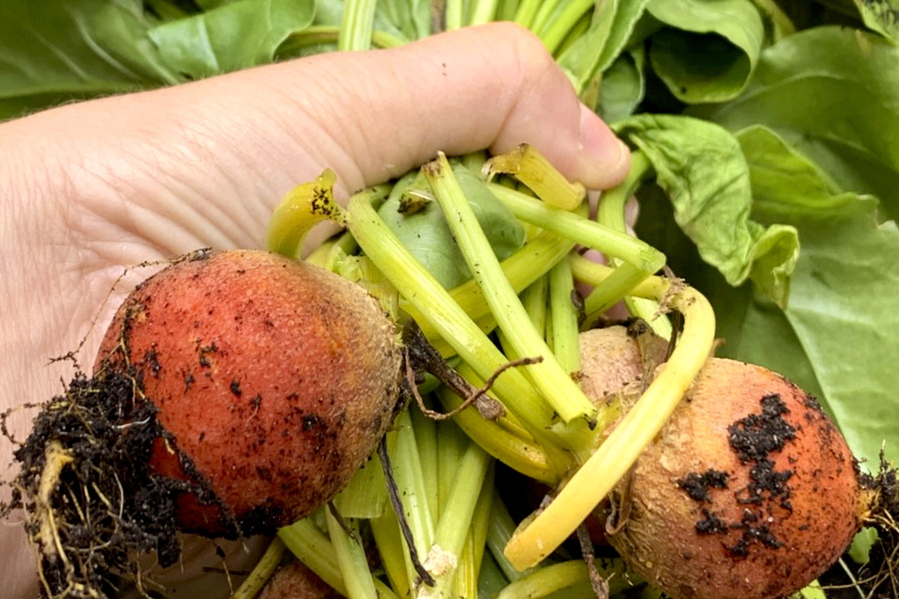If you missed out on growing a summer vegetable garden — or are enjoying homegrown produce right now and would like to extend your bounty — it’s time to start planning.
In most temperate regions, the window of opportunity for growing cool-season crops is opening. Take advantage, and you’ll be positioned to harvest vegetables long after your neighbors have packed up their gardening supplies.
The process for starting seeds and planting starter plants is the same year-round. But when planting fall crops in regions that experience frosts and freezes, timing needs to be precise. If you plant cool-weather crops too early, they’ll wilt under the summer sun; too late, and frost could kill them before they reach maturity.
To get it right, you’ll need to know your region’s first average frost date. I like the tool posted on The National Gardening Association’s website (https://garden.org/apps/frost-dates/ ). Enter your ZIP code, then scroll down to the chart labeled “In the Fall.”
Take note of the date in the field where the “10%” column intersects with the “First 32-Degree” row. That represents the date when, on average, there is a 10 percent chance the temperature will drop to 32 degrees. It’s a conservative estimate.
Next, count backward from your first frost date by the number of “days to maturity” listed on the plant tag or seed packet, and use that target date as a starting point.
There are some exceptions: In the southernmost regions, for example, a second planting of so-called summer vegetables like tomatoes, eggplants, peppers, squash and beans can be planted in August and September, but cool-season crops should wait until October or November. In regions like the Pacific Northwest, fall crops can typically be harvested straight through winter.
Leafy greens like arugula, Asian greens, collards, kale, lettuces, mustard greens, spinach and Swiss chard — and root crops like beets, radishes and parsnips — thrive best in cool temperatures and mature well under the shortening periods of daylight typical of fall.
Their seeds can be sown directly into the garden or outdoor containers in most areas. But because germination is improved in cooler temperatures, starting these seeds indoors under air conditioning will increase success in hot-summer climates.
Before sowing or transplanting, amend garden soil with generous amounts of organic matter like compost or aged manure, or mix in a slow-release fertilizer (follow directions). If you’re planting root crops, loosen the soil 10-12 inches deep to ease growth downward.
Plant seeds at the depth recommended on their packet, generally roughly twice their width, and observe spacing requirements to avoid overcrowding. Keep the soil moist, taking care to water gently to avoid washing away seeds. Firm the soil gently to pack it into place.
If seeds are tiny, instructions may indicate “scattering” and “thinning.” This means sprinkling seeds over the soil in rows, then removing extra sprouts to achieve the spacing requirements for the plants.
After seeds sprout, apply mulch to retain moisture, keep the soil temperature even and discourage weeds from taking hold. And pull up weeds that do present to eliminate competition for water and nutrients. Keep plants well-watered during the remaining summer months to prevent wilting and heat stress.
The flavor of cold crops —Brussels sprouts, cabbage, broccoli, cauliflower, collards, kale and kohlrabi — is improved by a light frost, defined as an overnight dip to 32 degrees.
Artichokes, arugula, beets, carrots, cauliflower, celery, endive, escarole, lettuce, parsnips, radicchio, Swiss chard and many Asian greens can withstand exposure to a hard frost for a limited time.
Others can be protected when overnight frosts are predicted by covering them with a row cover, bedsheet, blanket or tarp.



